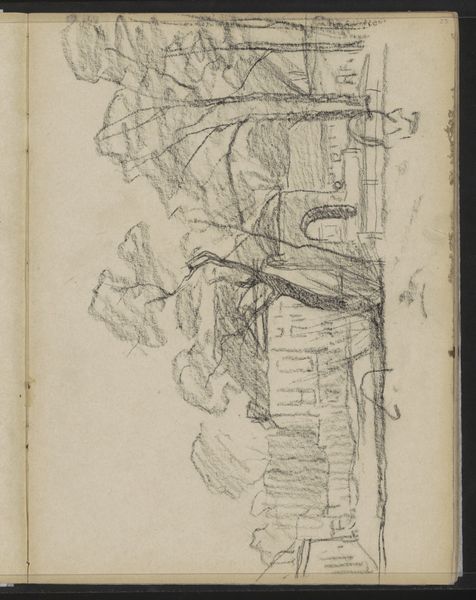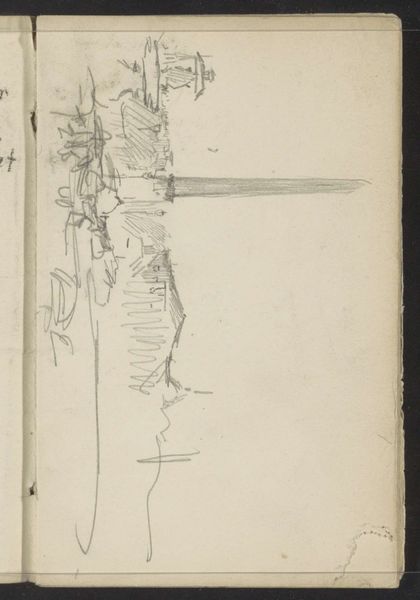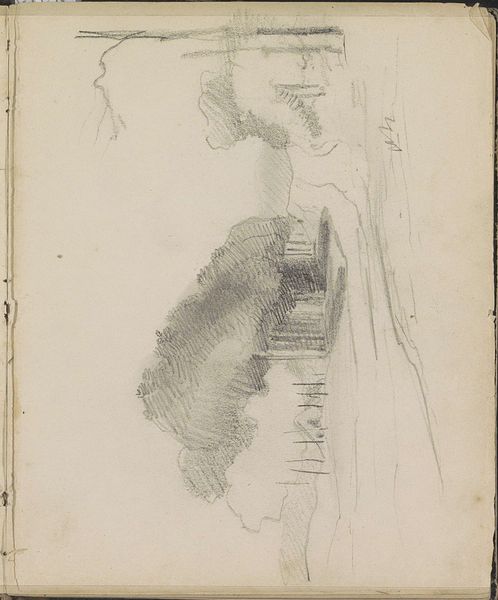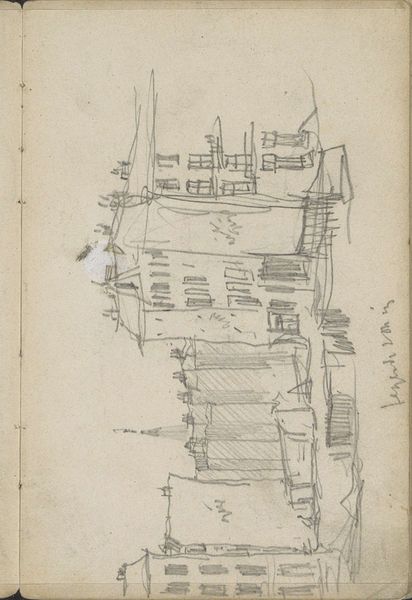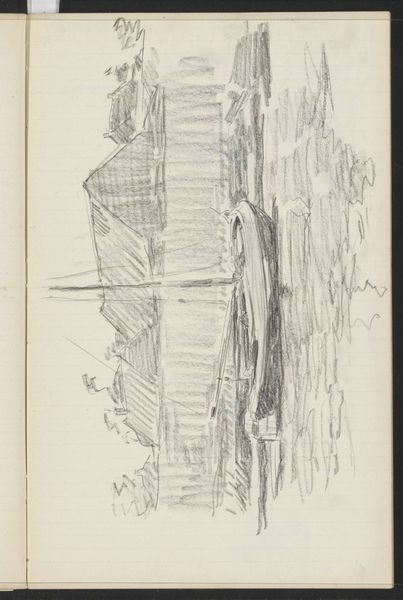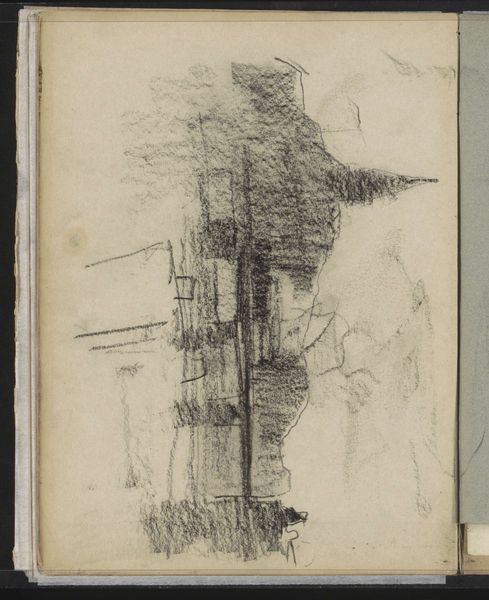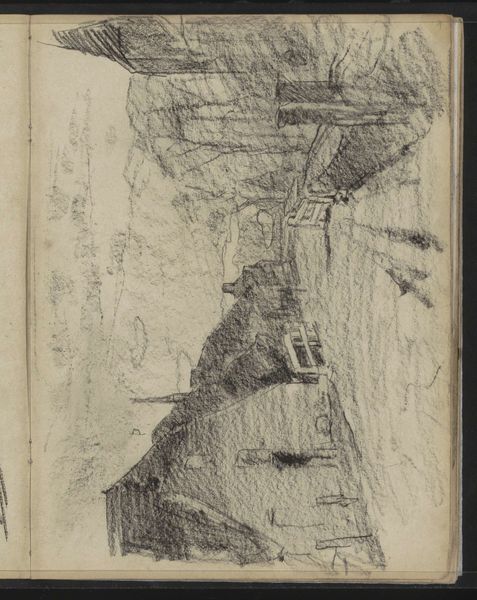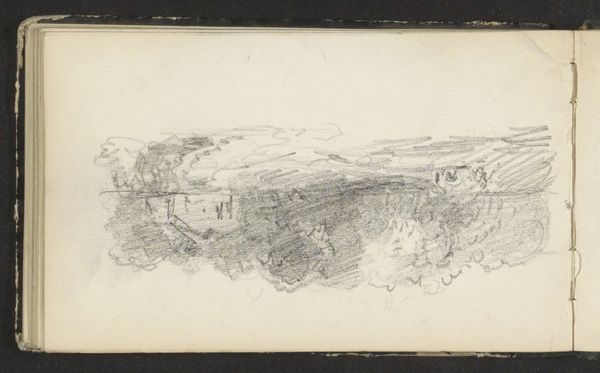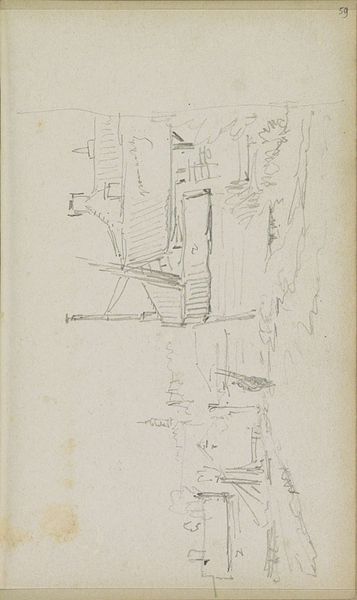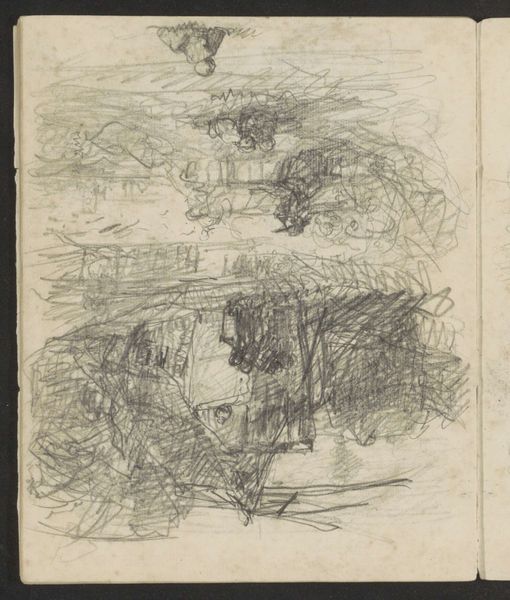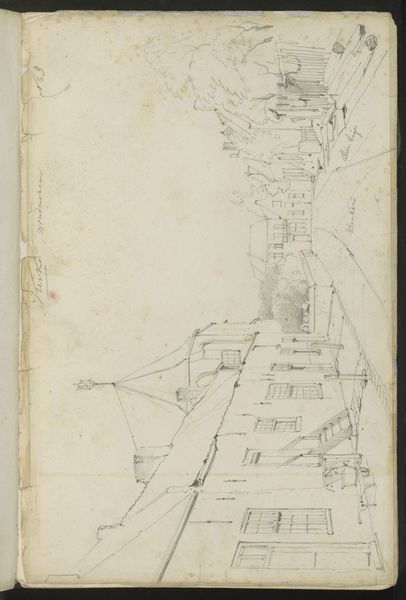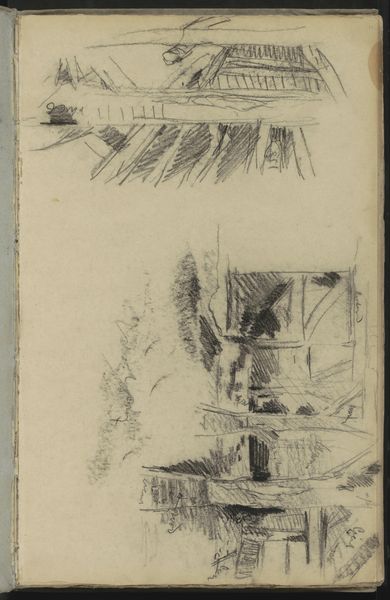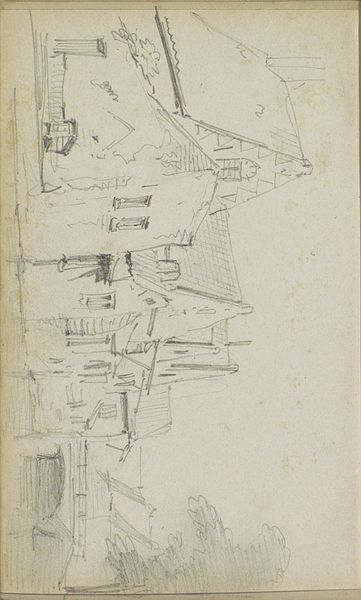
drawing, pencil
#
drawing
#
impressionism
#
landscape
#
pencil
Copyright: Rijks Museum: Open Domain
Editor: Here we have Willem Witsen’s "Gezicht op Diepenheim met de Johanneskerk," a pencil drawing from around 1887-1888. The hurried lines give it such a transient feel. What catches your eye in this sketch? Curator: I'm drawn to how Witsen, an Amsterdam Impressionist, captured this Dutch town. It speaks to the late 19th-century anxieties surrounding urbanization and industrialization. Artists were grappling with the changing social fabric. Does this depiction of the Johanneskerk, almost enveloped by its surroundings, speak to you about a yearning for simpler, perhaps romanticized times, before the dominance of secular modernity? Editor: That's a fascinating way to put it, I didn't quite think of that when I saw it. The church definitely feels like it is struggling with nature, yet they coexist in harmony. It makes me wonder if this artwork served as a statement or even protest for a slower life. Curator: Precisely. Consider also the medium: pencil on paper. A readily accessible tool to the working class, it perhaps makes a deliberate departure from the traditional, exclusive artistic expression associated with oil paints and the wealthy patron class. Did Witsen, through this very act of drawing in this specific style, challenge traditional social hierarchies and advocate for a more democratic vision of art and representation? Editor: So, you're suggesting the medium and the style themselves contribute to the artwork's socio-political narrative. That's insightful, and completely changes how I viewed this. Curator: Absolutely. These sketches of serene, almost melancholic scenes could be Witsen's subtle call for a return to humanist values amidst the overwhelming currents of rapid societal transformation. It's not just a landscape, but a commentary on a pivotal era. Editor: Thank you for shining a light on the intersection between artistic expression and social commentary. Now, I can look at art with a new lens. Curator: My pleasure. Considering such viewpoints really does change how we view the artwork.
Comments
No comments
Be the first to comment and join the conversation on the ultimate creative platform.

